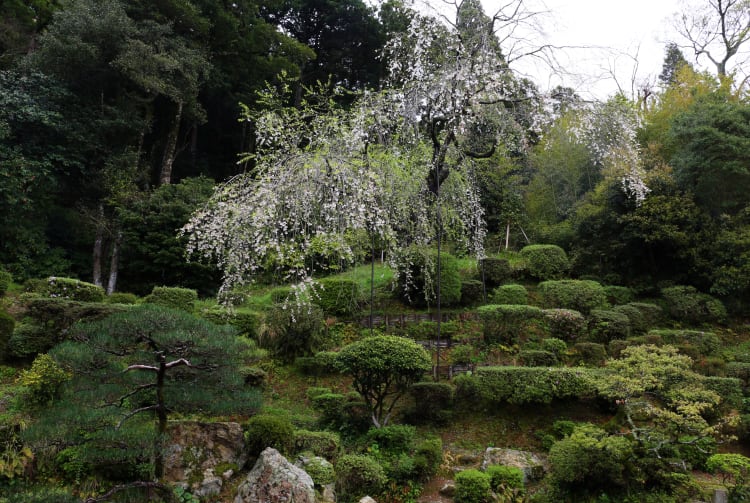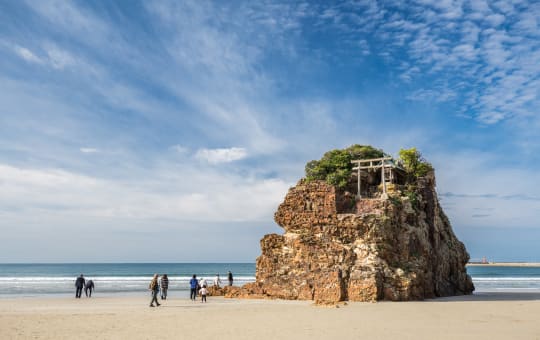The finest garden from Sesshu—the famed 15th-century painter
This garden is a masterpiece by Sesshu Toyo (1420-1506)—one of the greatest artists in Japanese history—and is thought to have been created around 1478 when he was head priest at Ikoji Temple.
Don't Miss
- The rakan statues, each with a unique expression
- Sesshu Memorial Museum nearby
- Another Sesshu garden at nearby Manpukuji Temple
How to Get There
Take the 10-minute bus ride from Masuda Station.
Masuda is last station on the Sanin Main Line running from Tottori.
Unfurling like a scroll
Gardens in Japan usually fall into two categories: view gardens—meant to be seen from a single viewpoint, usually the veranda of a temple or samurai home—and stroll gardens, meant to be walked around and more like a park. This garden can be considered a semi-stroll garden.
It unfurls like a scroll painting. The pond is in the shape of a crane flying west, and in it the island is shaped like a turtle. Both the turtle and crane are symbols of longevity.
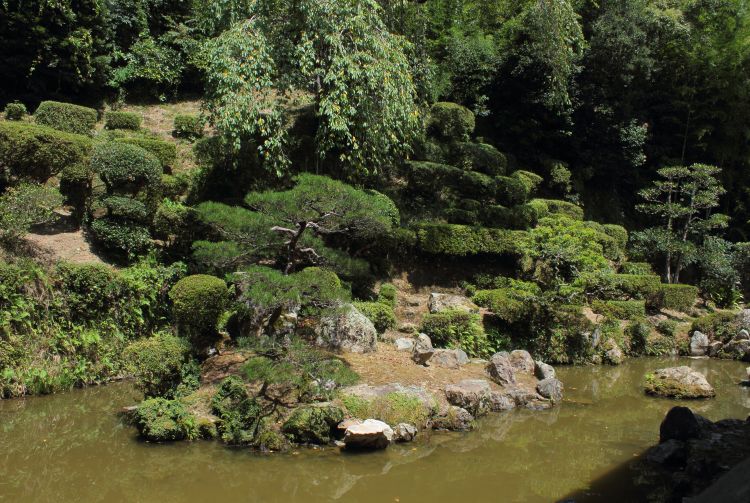
The garden is populated with elements that change with the passage of the seasons: in spring the weeping cherry tree blossoms, azaleas flower in May and in the summer all is lush green. Autumn turns the maples red, but it is in winter, after snowfall, when many consider it the most evocative of Sesshu's paintings.
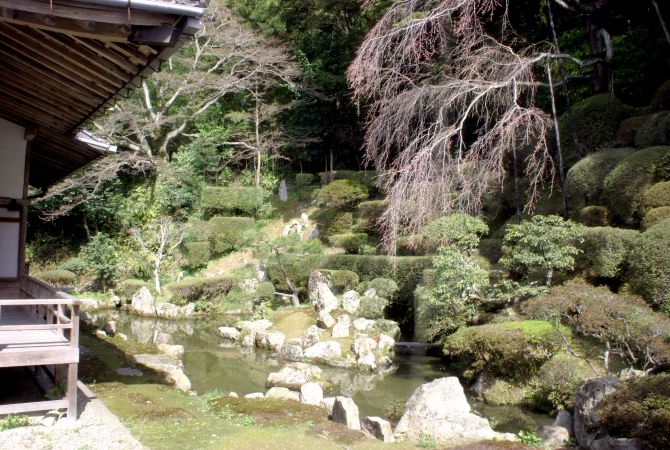
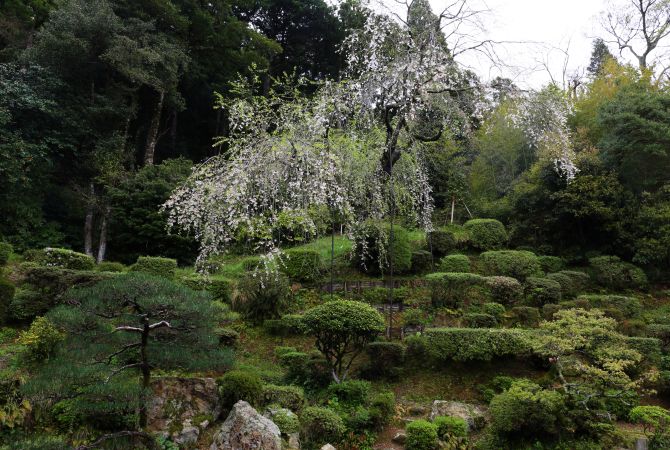
The story of Sesshu
Born in rural Okayama in 1420, as a young boy Sesshu was sent away to train as a Zen monk, and quickly showed an aptitude for art. At this time he received the name Toyo. Later he moved to Shofukuji temple in Kyoto and studied under Shubun, the greatest painter of the day. Once established as a painter in his own right he took the name Sesshu.
Sesshu moved to western Japan and painted most of his masterpieces there. The art of the time was based on the ink-painting techniques of China's Song dynasty, but Sesshu is credited with altering the style and making a distinctively Japanese version that has remained influential to this day.
He returned to Masuda towards the end of his life and is buried not far from the Sesshu Memorial Museum.
Exploring inside the temple
Wandering the rooms of the temple will reveal a wealth of art, including some lovely folding screens (though none of them were done by Sesshu) and a delightful 18th-century painting of the Buddha entering Nirvana. Worth looking out for is the Kaizan-do, a small hall of the main building which has a collection of rakan statues.
Rakan were the disciples of the Buddha, and a feature of their statues is that each one is carved with a unique expression. There are only 16 here, rather than the 500 found at some places, but the details and facial expressions are very beautifully carved. They were carved from single blocks of red pine.
Afterward, head to nearby Manpukuji Temple , only 500 meters away, where another Sesshu garden awaits.
Manpukuji Temple—the other garden
Manpukuji, one of the oldest temples in the region, was relocated to this spot in 1374 by the 11th lord of Iwami, Masuda Kanemi, who made it his family temple. It has quite a different appearance to Ikoji Temple, more minimal in design and with less decoration, which is also how the garden here appears. This is a view garden meant to be enjoyed from the veranda. With advance notice you can reserve matcha green tea and cake. Ponder the garden while sipping your tea.
The large rock protruding from the “mountain” beyond the pond represents Mt. Meru, the axis of the universe, known as Shumisen in Japanese. The pond is in the shape of the Chinese character for heart, kokoro.




















































